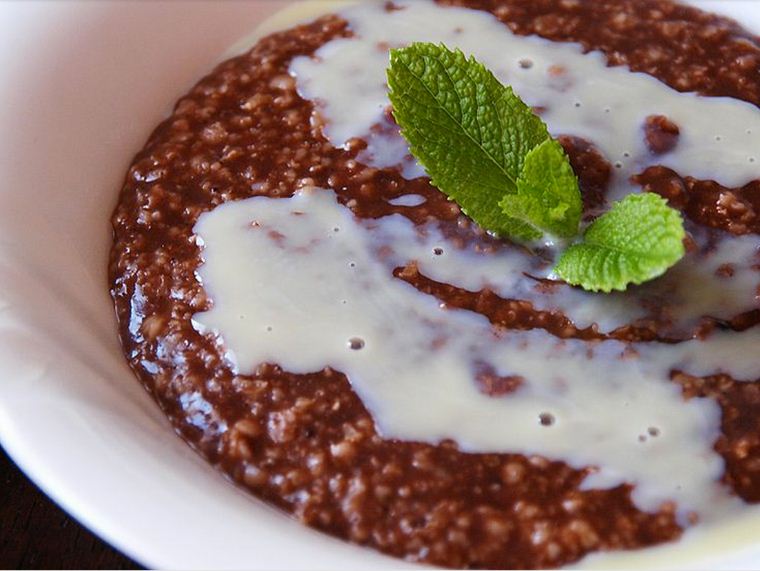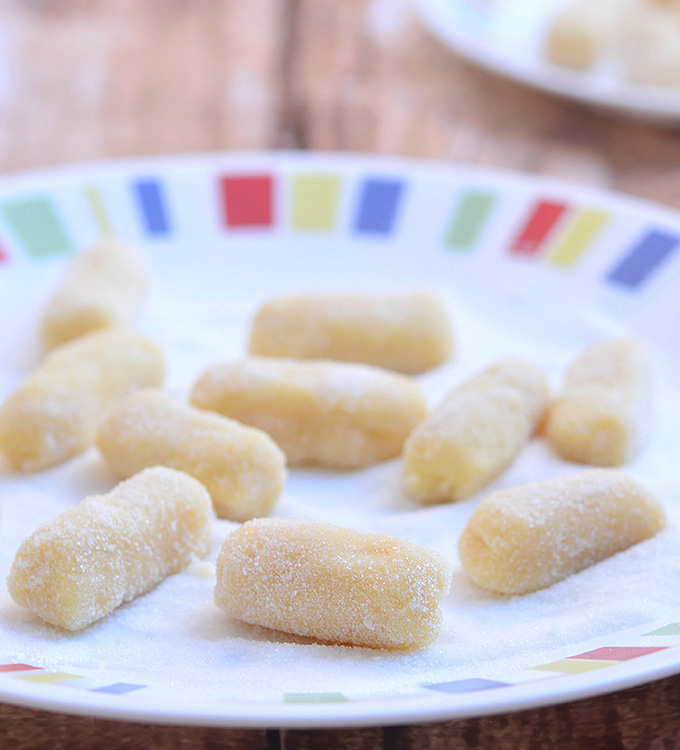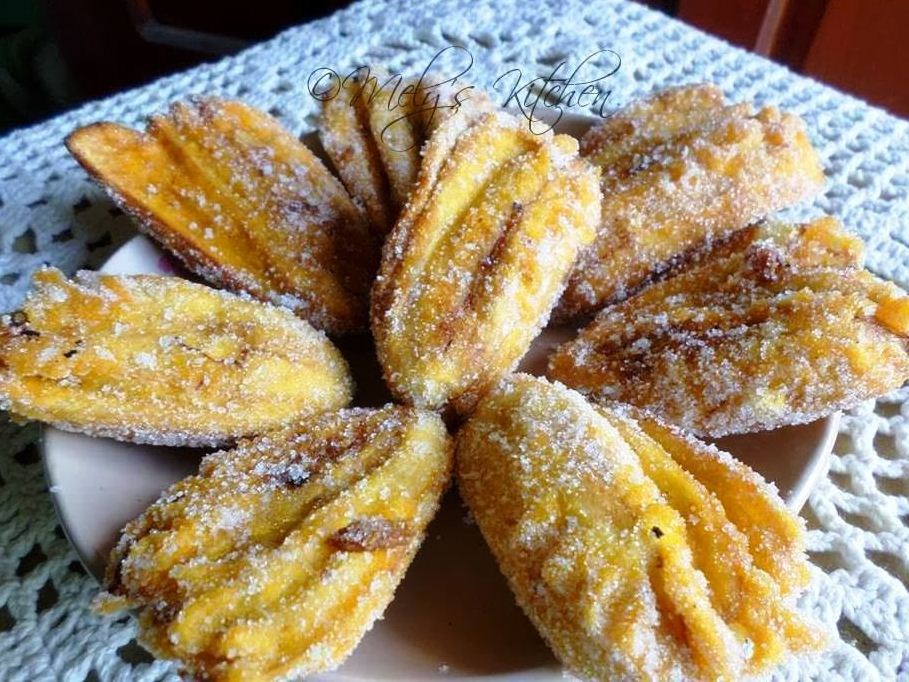With more than 7.000 islands, thousands of kinds of seafood, tropical fruit, vegetables and talented chefs, Philippines cuisine is like a box of chocolate whereby you never know the flavor until you bite in. Now, let’s discover 5 sweet dishes of Pinoy dessert of Filipino people.
- Melaka food blog — Experience Melaka delicacies, arrived at by Trishaw
- Vietnam food culture — Flowers and leaves in Vietnamese cuisine
- Swedish Fika — A Swedish cultural experience
- My trip to Nepal blog — A journey to the sacred land of the world
- Cormorant fishing Guilin — Meet the legendary fishermen of Li river
Champorado — A chocolate breakfast

Getting up in Ilo Ilo, Philippines, this time I do not choose fast food or a piece of cake in a convenience store. I follow my friend asking about traditional stalls which serve breakfast on the sidewalks. In the rainy season, the weather here is similar to Vietnam. It is windy and the sky is cloudy. On such a day, a cup of hot chocolate would be perfect.

The native friend hears my musing and eagerly pulls me to a mobile food stall. After a moment, a bowl of this fragrant rice cocoa desert arrives in front of me. Despite the rain and wind, many children drag their mums eagerly to the stall. The only word I can catch in their excited speaking is “Champorado”. The coming of the cold and rainy season marks the time many children desire this sticky rice porridge for breakfast.

In Pinoy cuisine, people pay a lot of attention to the suitable combining of sour, salty and sweet tastes. Champorado is also cooked according to this balance. This dish is made from sticky rice cooked with a special chocolate (bitter sweet chocolate of 77% coca), brown sugar and sugar- free evaporated milk. Champorado has a very rich brown color. One interesting thing about this porridge is that it can be served hot or cold. If you have it for breakfast, you should have while it is hot. When cold, you can enjoy this dish as a snack in your break time. Sometimes, Champorado is served with dried salted fish, which is locally known as tuyo.

This dish is easily found at many Filipino food stalls. For those who are too busy to visit a food stall, then a triple chocolate Champorado at Max’s Fried Chicken in Manila is also a good choice.
Halo-Halo — Let’s mix together!

When arriving in the Philippines, if you have not tried Halo-Halo, you are considered to have only set one foot on the land. Appearing on famous TV shows and in prestigious newspapers, this dish was also the theme for a Top Chef episode.A mixture of different ingredients, this popular dessert is an excellent example of typical of Filipino cuisine.

In a serving of Halo-Halo, there must be a purple yam, known locally as“Ube”). People here really like ube. This is why ube is an ingredient in many mixtures, ice creams and cakes. Can you guess why ube is so popular? It is simply because the purple color of ube is similar to the color of Philippine’s 100 peso notes. So, this is also the color of luck and prosperity. The practice of making Ube Haleyang, making Ube cakes and serving these cakes during New Years has become a tradition to people in this country.

Coming back to a glass of famous Halo- Halo, under the purple ube is a layer of crushed ice and some evaporated milk. Under the ice you can see ripe sliced jackfruit, banana and mango – ingredients which are similar to those used for making Vietnamese fruit mixtures. The difference is that there is a layer of tapioca, jam, flan and a variety beans used in making Halo Halo. When the dish is served, it is eaten by mixing all the ingredients together, allowing you to enjoy the combined flavors.

BBQ banana party with Turon, Banana Q, Ginanggang & Maruya

Bananasin the Philippines are very large, almost 3 times the size of Siamese bananas in Vietnam. Their skin ripens into yellow. Despite their size, these bananas are still very aromatic. This variety is not so sweet, however. Although they can be served as fruit people here use them in cooking. This is known as the Saba or Cardaba banana. Travelling through the Philippine market, I am surprised at the variety of dishes made from bananas. Four of the dishes that I must try are Turon, Banana Q, Ginanggang and Maruya.
Maruya is quite similar to Vietnamese fried banana. The banana is sliced thinly; then pressed into flour. Sugar or honey is added and then the bananas are fried. The fried banana is usually covered with some syrup before being served. Because this kind of banana is not as sweet as Vietnamese ones, you do not need to worry that this dish is too sweet when it is ready.

Ginanggang is an appealing aromatic baked banana. In BBQ parties, it is impossible to leave out Ginanggang. Big Saba bananas are skewered on bamboo sticks and grilled over charcoal until the banana changes color. Butter is added and the bananas are continued to be grilled until they turn golden brown. Finally, the bananas are covered with some sugar.



With Banana Q or in other words Banana Cue, bananas are peeled, dusted with sugar and fried until the sugar melts into brown caramel. For more complexity, instead of making Banana Cue, let’s try covering the bananas with a layer of rice sheets and some jackfruit leaves,; then frying them. Now you have Turon – “banana rolls” as I call them. Even people who are not good at cooking can make this dish right in their home. Bananas are cut in half and rolled into brown sugar. The bananas are usually accompanied by some slices of sweet jack fruit or ripe mango. You can even add some cheddar cheese if you like. Everything is wrapped in rice paper. When the oil boils, put the banana spring rolls in and wait for the sugar to start caramelizing and covering the wrappers. Now they are ready and you can start your banana BBQ party!





Pastillas de Leche for tea party in the tropical region

Derived from a Spanish dessert made from fresh milk named Leche Frita, Pastillas de Leche is made on family reunion occasions. A Vietnam local is likely to know about fried condensed milk, which quickly became a favorite after its first appearance in Vietnam. But if you do not like the smell of cooking oil, Pastillas de Leche is a perfect choice for you.

Buffalo milk or carabao milk is usually used to make this dish because it is high in fat and easy to make cream can reduce to cream easily. Boil the carabao milk and , add some sugar to thicken the mixture. Stir the mixture until it is hot. Then, pour the mixture into molds; or you can wait for the mixture to cool down and use your hands to roll each piece. Roll each length in sugar and now you have “milk sausages” which are plump and and thick. Pastillas de leche is usually served at tea parties and is also a popular street food of the Phillipines.
“Milk pieces” can be made into the shapes of pills or capsules. They can be put into the fridge to keep cool. But be careful! This dish is simple to make and very addictive!. These can be original Christmas gifts for your beloved ones.

Christmas taste of Bibingka

While European people associate Turkey with Christmas, Philippine people cannot forget Bibingka on a Christmas morning. Originating from China, this dish is a favorite dessert for Phillipine people. This cake is smooth, soft and not too sweet.
Bibingka is made from rice flour, coconut milk, egg, sugar, butter and milk. Mix the rice flour with sugar and pour the flour into a mixture of egg, coconut milk, butter and milk. Shake the mixture. You should not stir the mixture before pouring it into a large bowl covered with a banana leaf to make the mixture spongy. After the cake is baked, it is hot, soft, and spongy; and you can put some salted eggs or some coconut on the top. Some people even add some kesong puti cheese or some pineapple to the Bibingka.

Bibingka is often sold in front of churches in at Christmas. If you visit the Phillipines in November and December, you can enjoy a choice of Bibingka. There are even people who sell Bibingka with a top layer of Balut (fertilized egg). You can also easily find hot Bibingka in the open air markets or visit bakeries such as Frino’s Bibingka in Metro Manila.

Cuisine of the Philippines is a combination of a variety of cultures such as Spanish, Chinese and Indian,not to mention the cultures of neighboring countries such as Vietnam, Indonesia and Malaysia. Cuisine is like a window into a country. Trying the dishes of the Philippines, I feel the sweet taste, the friendliness and the hospitality of people here.
If you traveling to Ho Chi Minh City (Saigon) you can enjoy theses dishes at:
+ Loriekot’s Lutong Bahay – 193 Dien Bien Phu, Dist 3, HCMC
+ Manila Fiesta – Parkson Lê Thánh Tôn, 35 Bis 45, Le Thanh Ton, Dist 1, HCMC































![10 best airports in Asia in 2016 [RANKED] kuala-lumpur-international-airport-best airports in asia in 2016 by skytrax ratings](https://livingnomads.com/wp-content/uploads/2016/08/29/kuala-lumpur-international-airport-best-airports-in-asia-in-2016-by-skytrax-ratings-218x150.jpg)































